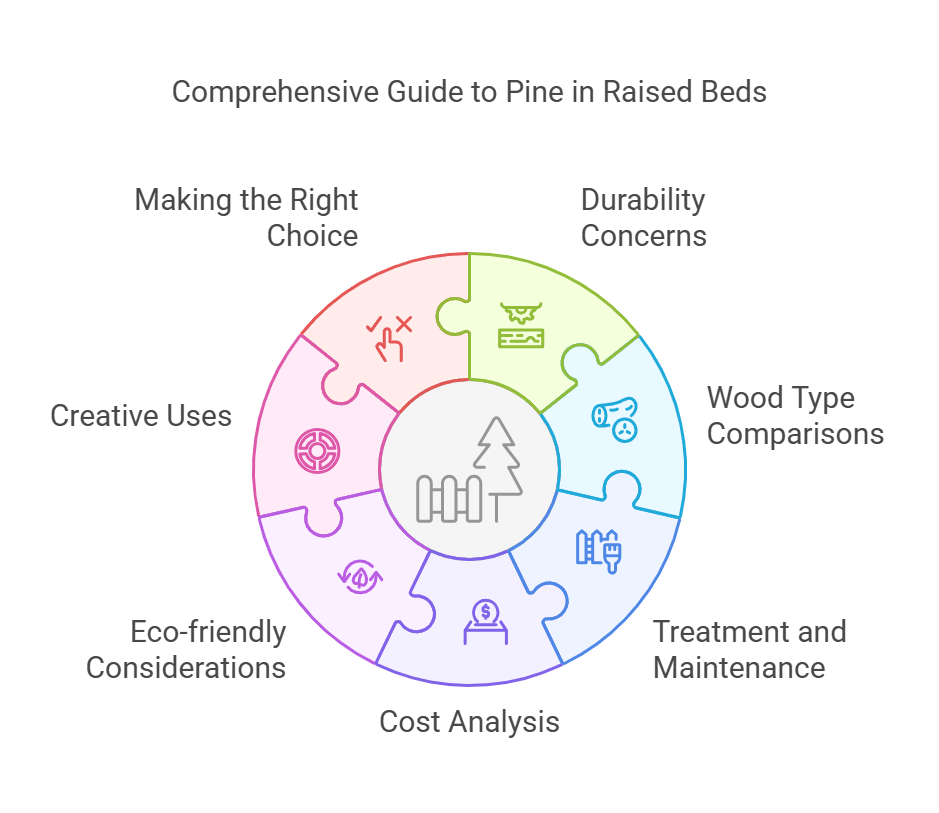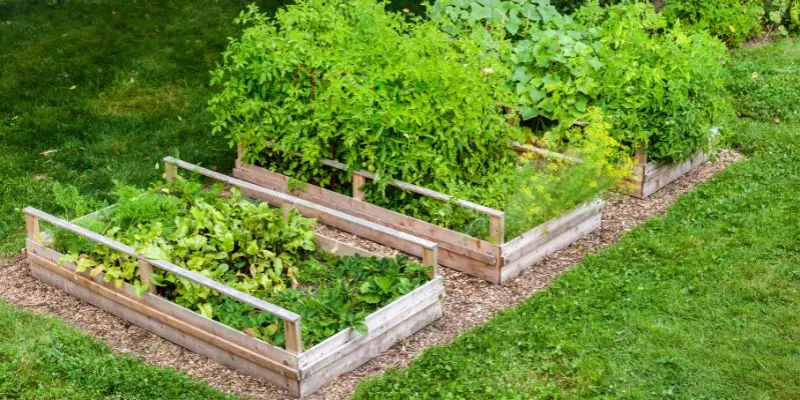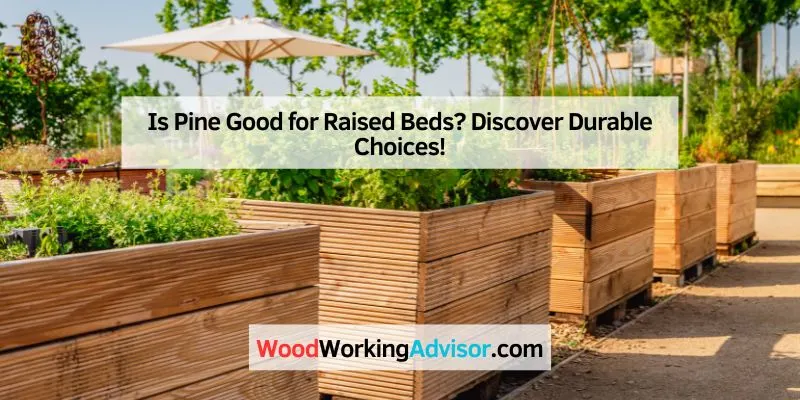Pine is a good choice for raised beds due to its lightweight nature and affordability. It also has natural resistance to rot, making it suitable for gardening.
Raised garden beds are a popular option for both novice and experienced gardeners. They provide better soil drainage and improved accessibility. Choosing the right material for your raised beds is crucial for long-term success. Pine wood stands out because it’s cost-effective and easy to work with.
Its lightweight nature makes it simple to transport and assemble. Plus, pine’s natural rot resistance helps protect your plants. Gardeners appreciate how pine blends well with various landscapes, enhancing the aesthetic appeal of their gardens. Understanding the benefits of using pine can lead to a more productive and enjoyable gardening experience.
Exploring Pine For Raised Beds
Pine is a popular choice for raised beds due to its affordability and availability. It is lightweight and easy to handle. The wood also has a natural resistance to rot, which can be beneficial in a garden setting.
Another advantage is that pine can insulate soil, helping plants stay warm. This feature is great for extending the growing season. Pine wood can also be easily cut to fit any shape or size.
| Benefits | Drawbacks |
|---|---|
| Affordable | May contain resin that can harm some plants |
| Lightweight and easy to work with | Less durable than other woods like cedar |
| Natural resistance to rot | Can warp or crack over time |
Durability Concerns With Pine
Pine wood is popular for raised garden beds. Its lifespan in garden conditions varies. Typically, untreated pine lasts around 5 to 7 years. Treated pine can last longer, up to 10 to 15 years. Factors like moisture, soil type, and climate affect its durability.
Moisture is a major concern. Wet conditions can lead to rot. Soil type also plays a role. Sandy soils drain better than clay soils. Climate impacts how long pine lasts. Hot, dry areas may extend its life.

Comparing Wood Types For Raised Beds
Pine is a popular choice for raised beds. It is affordable and lightweight. However, it may not last as long as other woods. Cedar is a better option for durability. It naturally resists decay and insects. Many gardeners prefer cedar for its longevity.
On the other hand, redwood is also a great choice. It offers a rich color and strong resistance to weather. Redwood tends to be more expensive than both pine and cedar.
Other wood alternatives include bamboo and composite materials. Bamboo is eco-friendly but may not last as long. Composite materials are made from recycled products. They are durable and often require less maintenance.
Treatment And Maintenance For Longevity
To keep pine raised beds in great shape, sealing is essential. Use water-resistant sealants to protect the wood. This helps prevent moisture damage and decay.
Regular maintenance is key for longevity. Inspect the wood for any signs of wear or damage. Sand rough areas to prevent splinters. Reapply sealant every couple of years to maintain protection.
Here are some routine maintenance tips:
- Check for cracks or splits regularly.
- Clean dirt and debris off the surface.
- Replace any damaged boards promptly.
- Keep plants away from direct contact with the wood.
Cost Analysis: Pine Vs. Other Woods
Pine is often cheaper than many other woods. Initial costs for pine are lower. This makes it a popular choice for raised beds.
Long-term investment in pine can vary. Pine can last several years with proper care. It may require treatment to resist rot and pests.
Consider these factors:
- Initial Costs: Pine is budget-friendly.
- Durability: Not as long-lasting as cedar or redwood.
- Maintenance: Requires regular maintenance for longevity.
Eco-friendly Considerations
Pine wood is a popular choice for raised beds. Its lightweight nature makes it easy to handle. The sustainability of pine is significant. Pine trees grow quickly and can be harvested responsibly.
Using pine helps reduce waste. Many pine products come from managed forests. This practice protects the environment and promotes new growth.
Impact on soil health is crucial. Pine wood can improve soil structure. It helps with moisture retention. The decomposition of pine adds valuable nutrients to the soil. This supports healthy plant growth.
Consider using untreated pine for safety. Treated wood may contain harmful chemicals. Untreated pine is safer for plants and the environment.

Creative Uses Of Pine In Garden Design
Pine wood offers great aesthetic appeal in garden design. Its natural grain and warm color enhance any space. Using pine for raised beds creates a rustic charm. The lightweight nature of pine makes it easy to handle.
Functional designs can also benefit from pine. It resists decay better than other woods. This durability ensures longer-lasting raised beds. Pine can be shaped into unique structures for plants. It allows for easy customization to fit any garden layout.
| Benefits of Pine | Description |
|---|---|
| Lightweight | Easy to move and install |
| Durable | Resists decay and weathering |
| Versatile | Can be shaped for various designs |
Making The Right Choice For Your Garden
Choosing the right wood for raised beds is important for your garden. Pine is a popular choice due to its affordability and availability. It is lightweight, making it easy to handle. However, pine can decay faster than other woods.
Consider the environment of your garden. If it’s very wet, pine might not last long. Treated pine can resist rot, but it may contain chemicals that can harm plants. Always check for organic options if you want to be safe.
| Type of Pine | Durability | Cost |
|---|---|---|
| Untreated Pine | Shorter lifespan | Low cost |
| Treated Pine | Longer lifespan | Medium cost |
Consider your budget and how long you want the beds to last. Local climate also plays a role in your choice. Always think about your specific garden needs.
Frequently Asked Questions
Is Pine Wood Safe For Garden Beds?
Yes, pine wood is generally safe for raised garden beds. It doesn’t leach harmful chemicals into the soil. However, untreated pine may rot over time. Consider using treated pine if you want longer-lasting beds. Ensure any treatment is safe for food plants.
Does Pine Affect Soil Ph In Raised Beds?
Pine wood can slightly acidify soil over time. This is primarily due to decomposing pine needles. However, the effect is usually minimal. Most plants can tolerate slight pH changes. Regular soil testing can help maintain optimal conditions for your plants.
How Long Does Pine Last In Raised Beds?
Untreated pine typically lasts 5 to 7 years. This lifespan can vary based on moisture and soil conditions. To extend durability, consider using treated pine or sealing the wood. Regular maintenance can also help prolong the life of your raised beds.
Should I Line Pine Raised Beds?
Lining pine raised beds is not always necessary. However, it can help prevent rot and prolong the wood’s life. Consider using landscape fabric or plastic sheeting. This barrier can also keep soil in place while allowing drainage. Ensure it is safe for gardening use.
Conclusion
Pine is an excellent choice for raised beds. Its affordability and availability make it popular among gardeners. While it may require some maintenance, its natural properties can benefit your plants. Consider sealing the wood to prolong its lifespan. Overall, pine can be a practical and effective option for your gardening needs.

